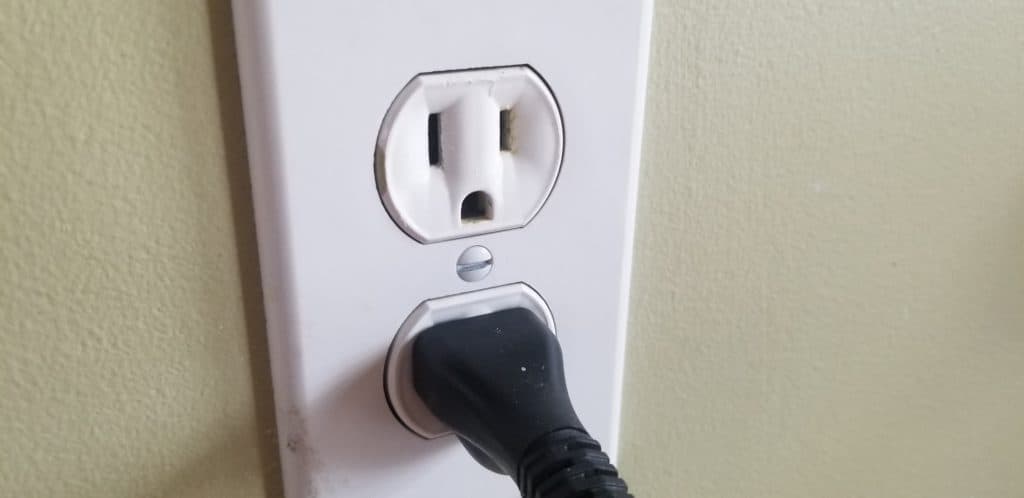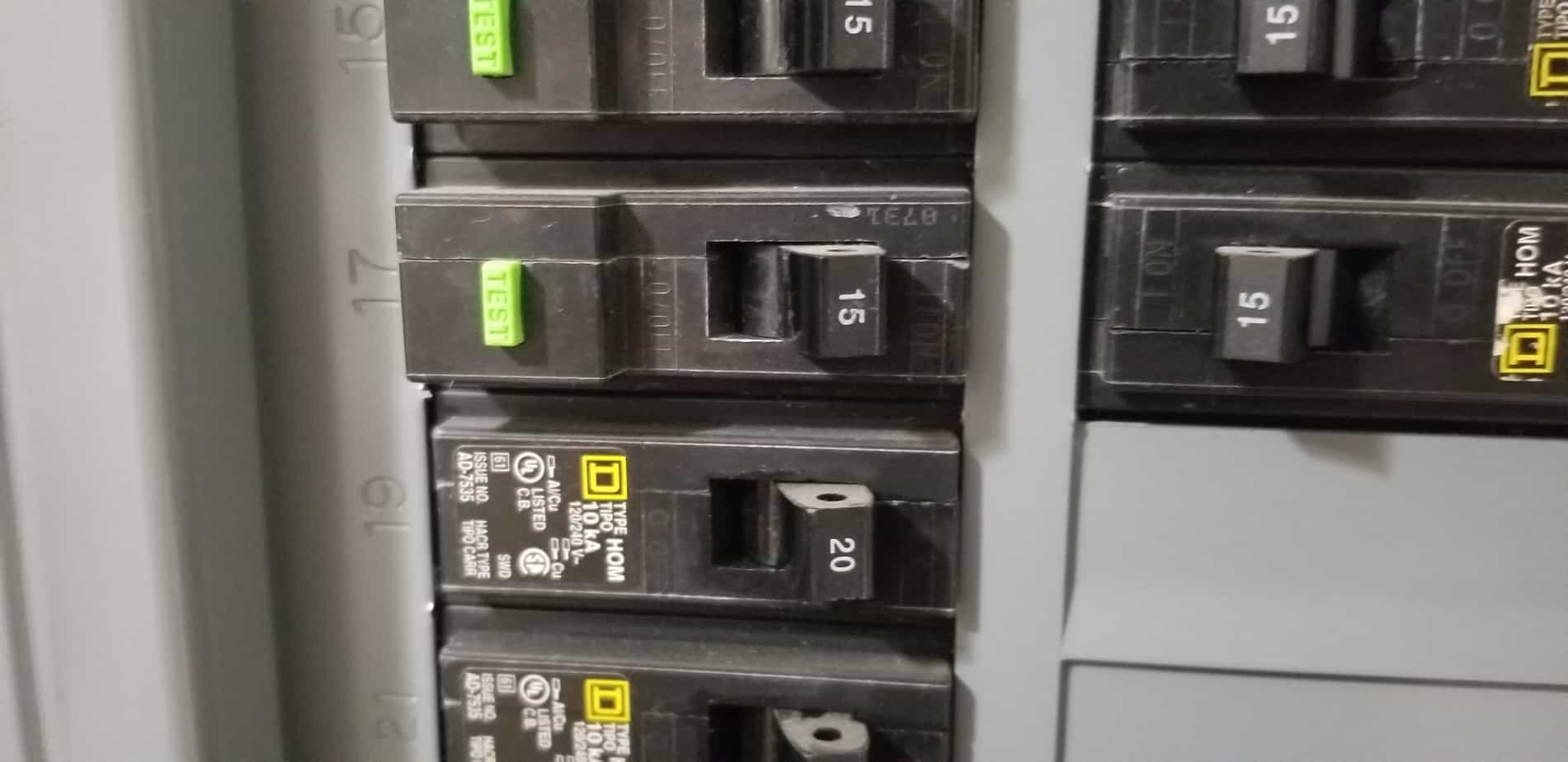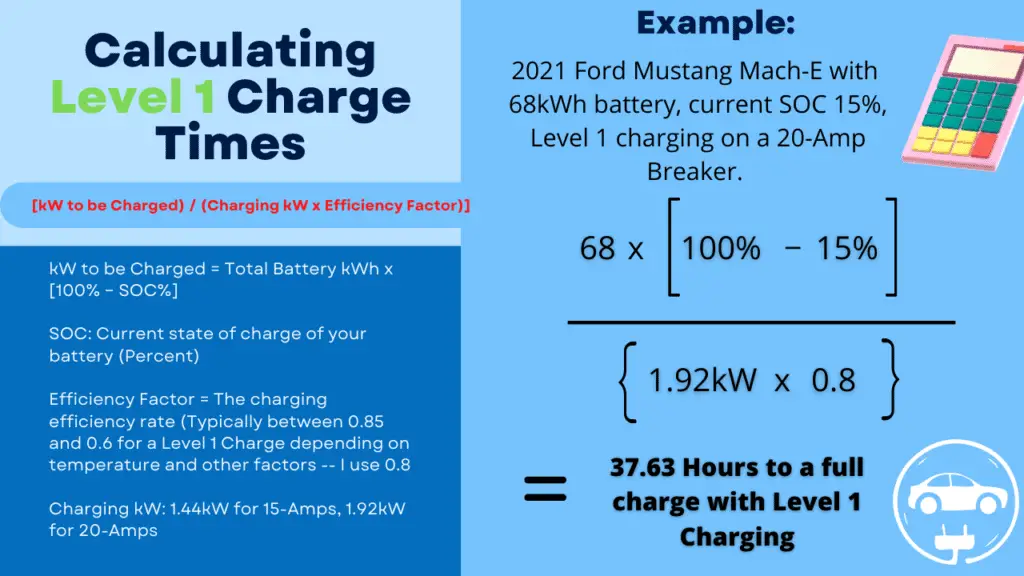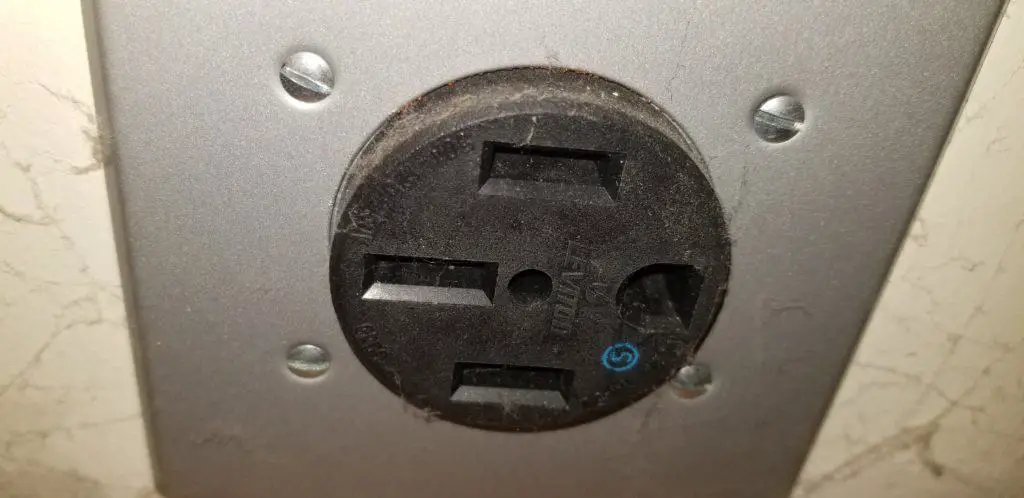One of the first questions someone has who is new to electric cars is if they can be charged by plugging them into a regular wall outlet.
Besides the overall look of an EV being a car, everything about the maintenance and refueling (recharging) process is different and it’s understandable to ask this question.
Electric cars plug into regular household outlets with an EVSE that can be adapted for either a home’s 120v or 240v receptacles. Level 1 charging, which uses 120V, is the slowest form of charging and can take 2-3 days for a full charge. Level 2 charging uses 240v and can fully charge most EVs overnight.
Let’s take a look at the two outlet types that you’ll generally find in your home, how they differ, and how long it will take to charge your EV with either of them.
Can you Charge an Electric Car from a Normal Plug Socket?
The title above is what everyone asks when they’re first exposed to the concept of an electric vehicle.
An electric vehicle can be charged from a normal plug socket that you would find in the home with either 120-volts or 240-volts.
When we say “normal plug socket”, most people think of a NEMA 5-15 receptacle like the one seen below (at least in North America).

An outlet like this will put out 120 volts of electricity (though many still refer to it as 110-volts). The volts is essentially the pressure behind the electrons that are flowing through the wires.
If you look in your main breaker panel, you’ll see that you generally have 120-volt breakers that are either 15 or 20 amps. The 15 might be used in a bedroom, whereas a 20-amp breaker would be used in kitchens to handle appliances and for your microwave.

Amps are the electron that are flowing through the wire, whereas voltage is the pressure behind them. As you’ve probably figured, the higher the amps (and/or voltage), the faster the charge will be.
One thing to keep in mind is that the amp rating on the breaker is the max load before it will trip and cut off the power supply. A breaker typically has a rated running amperage at 80% of the breaker number.
Therefore, a 20-amp breaker will only supply 16-amps reliably, and a 15-amp breaker will only supply 12-amps.
Remember this:
- Amps x Volts = Watts
- 1,000 watts = 1kW (kilowatt)
If we do the math we would get the following as far as kW from each breaker type:
- 16amps x 120V = 1.92kW
- 12amps x 120V = 1.44kW
How Long Does it Take to Charge a Car with a Regular 110V Outlet?
As you can see from the math above, when using Level 1 charging with a 120V outlet we are only getting 1.92kW or 1.44kW of electricity when using a 20-amp or 15-amp breaker, respectively.
As a general rule, an EV that uses Level 1 charging at 120V will gain back 3-5 miles of driving range per hour and will fully charge from empty in 2-3 days — depending on the total kWh (kilowatt-hour) size of the battery.
However, if you were really trying to find out how long it takes to charge your particular EV, then the math look like this in the following example. (You can check out my article here to see the Level 1 charging formula explained in full detail here, or you can also check out my article here that breaks down how to calculate Level 1, 2, and 3 charging times.)

Do You Need a 220V (240V) Outlet to Charge an Electric Car?
While it is not required, using a 240V outlet to charge an electric vehicle will make your charging speeds 4-5 times faster and you’ll be able to charge nearly any electric car overnight from empty. Charging at 240V is considered “Level 2 Charging” and you’ll gain back 15-30 miles of range per hour of charge time.
Level 1 charging is tediously slow, but if you only ever drive a 10-20 miles a day or less, then it’s probably not that big of a deal to charge at that speed.

If, however, you’re driving 20 or more miles per day, then paying an electrician some money to install a 240V outlet in your garage may be well worth it. You might be thinking that it’s completely doable to charge 20 miles overnight with a Level 1 charger, and it is, but it’s not necessarily the best thing to be charging your battery every single day.
Every time you charge your battery — even if it’s just to charge from 90% to 100%, that counts as a “charging cycle”. Every charging cycle you do will ever so slightly reduce your battery’s capacity (and therefore the range) as there are always some chemical reactions that occur during the charging process that are irreversible.

If your car has a range of 300 miles, and you drive 20 miles a day for 5 days, then you would need to recharge 100 miles at the end of the week. That will take about 25 hours with a 120V Level 1 charger, or you could knock it out in 5 with a 240V outlet on Level 2.
What do I Need in my Garage to Charge my Electric Car
With Level 1 charging, you’re just going to need the complimentary EVSE (Electric Vehicle Supply Equipment) that came with your vehicle and a normal 120V outlet that you would normally plug a fan into in your garage. Besides that, you’ll need a whole lot of patience as you wait for 2-3 days for the vehicle to fully charge if your battery happens to be empty.
Level 2 charging is a little trickier. If you’re not handy, you’ll need to pay an electrician run wires from your main breaker to the garage and have a 240V receptacle installed. Hopefully it’s just as easy as that. It may be the case that you’ll need to upgrade your panel, so be prepared for that as a possibility and expense.

The good news is that you may be able to qualify for a tax credit for having this service performed.
If you plan on getting a Tesla, be sure to look into having a Wall Connector installed. You can check out the link which will take you to Tesla’s page that describes the speeds and installation.
Make sure that when you have a 240V receptacle installed that it matches the plug on your EVSE, or make sure that you get an adapter for it to make it compatible. There are at least a dozen styles of 240V receptacle orientations. The receptacle used for a 30-amp breaker will not be the same as the one used for a 40-amp breaker.

